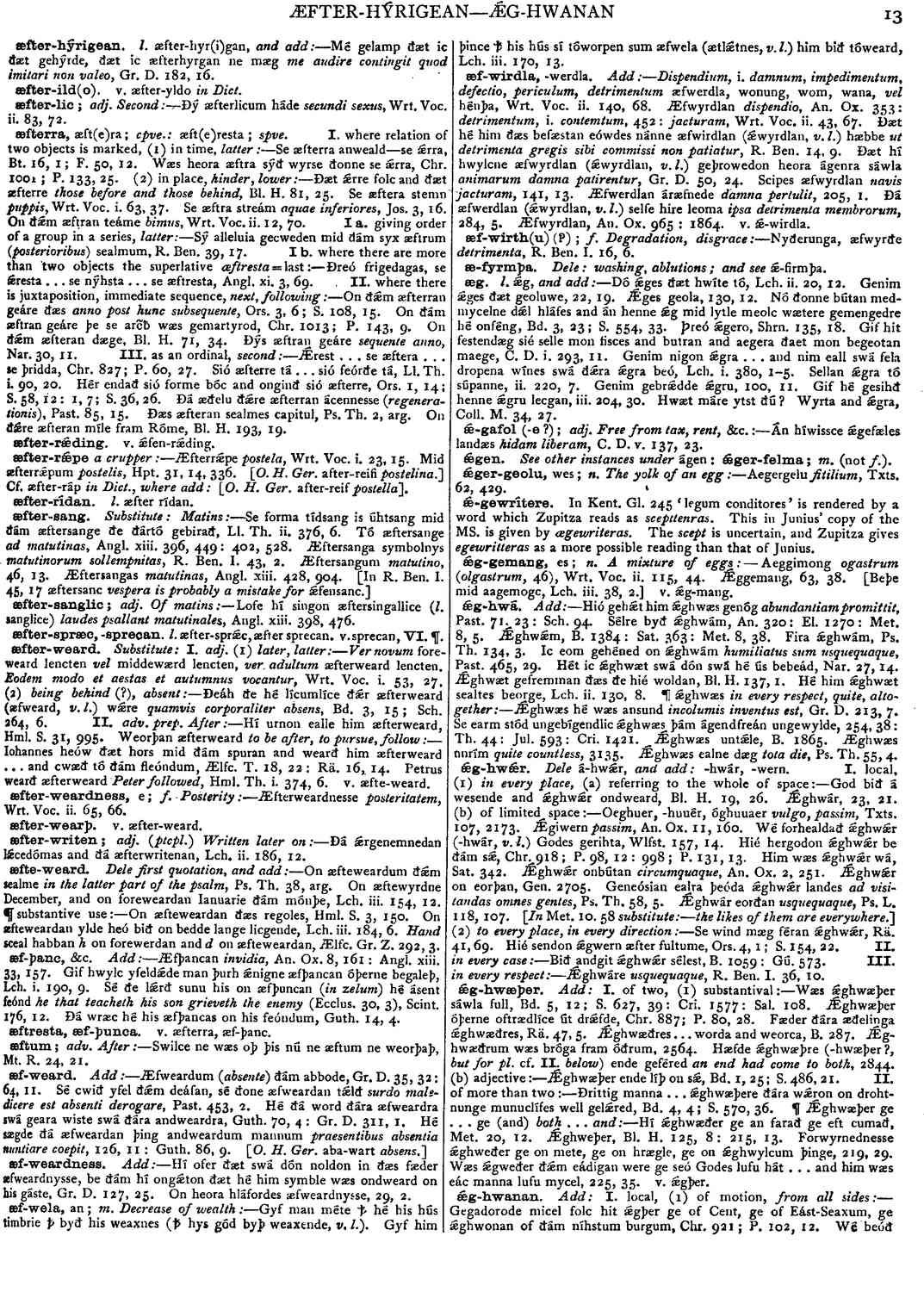ǽg-hwanan
-
Gegadorode micel folc hit ǽgþer ge of Cent, ge of Eást-Seaxum, ge ǽghwonan of ðám níhstum burgum,
- Chr. 921; P. 102, 12.
-
Wé beóðǽghwanum cumene,
- Dóm. L. 120.
-
Mid costungum wé sint ǽghwonon útan behrincgde,
- Past. 163, 16.
-
Éghwanon gecnissed,
- Hml. S. 30, 192.
- Hé hine ǽghwanon mid ðǽre róde tácne gewǽpnode, 23 b, 776.
-
Hí mon ǽghwanone sécan sceolde,
- 23, 236.
-
Nú is ǽghwonon hreám and wóp, nú is heáf ǽghwonon, nú is ǽghwonon yfel and slege, and ǽghwonon ðes middangeard flýhþ from ús,
- Bl. H. 115, 15-17.
-
Ic eom gehéned ǽghwonane
humiliatus sum usquequaque,
- Past. 465, 29.
-
Ne forlǽt ðú mé ǽghwanan (
usquequaque
),- Ps. L. 118, 8.
-
Ic mé ongite ǽghwonan scyldigne,
- Bt. 8; F. 24, 12.
-
Ic ǽghwanane eom ungesǽlig,
- Hml. S. 30, 205.
Bosworth, Joseph. “ǽg-hwanan.” In An Anglo-Saxon Dictionary Online, edited by Thomas Northcote Toller, Christ Sean, and Ondřej Tichy. Prague: Faculty of Arts, Charles University, 2014. https://bosworthtoller.com/37730.
Checked: 0